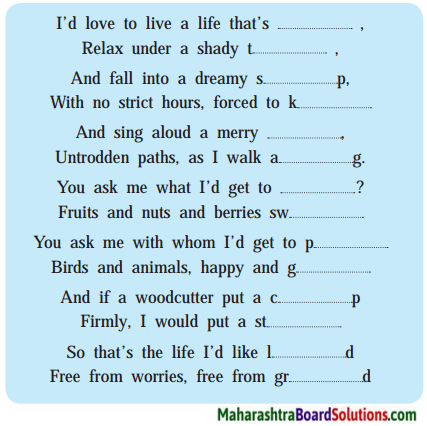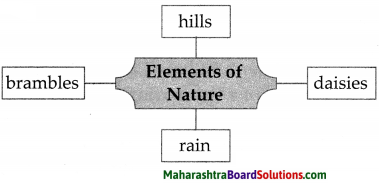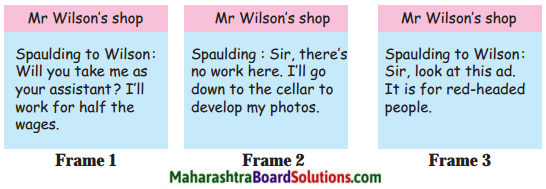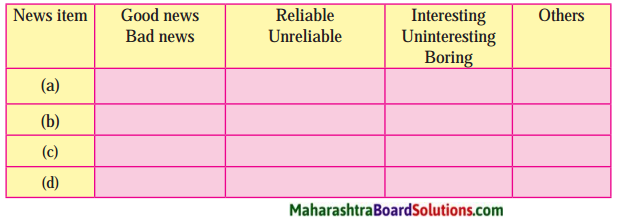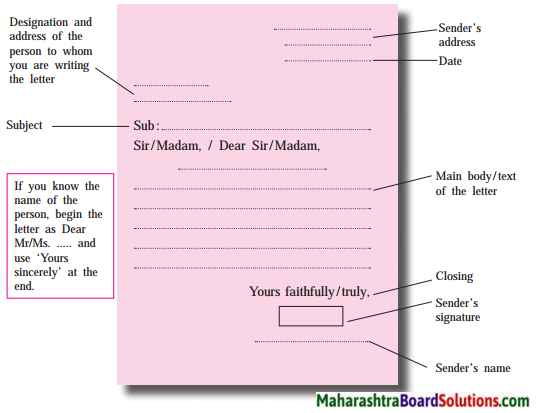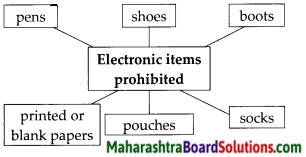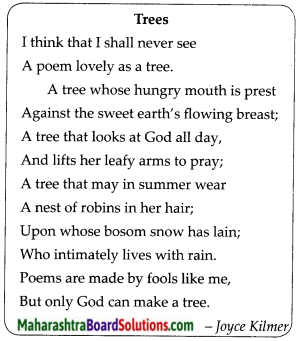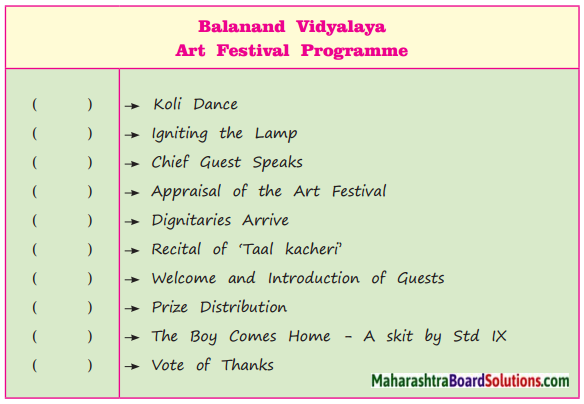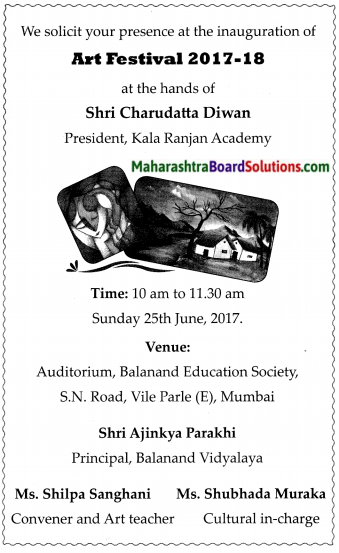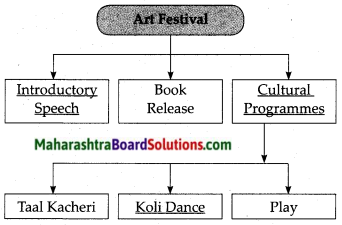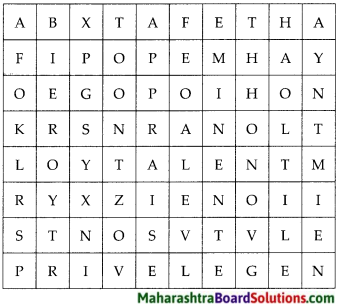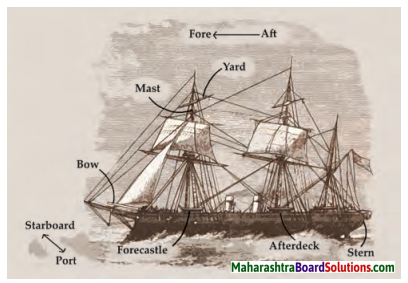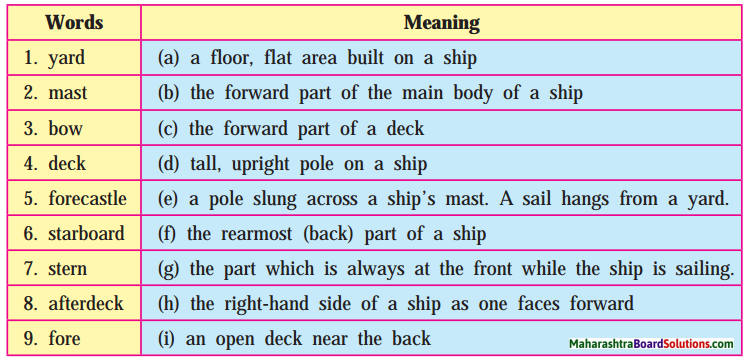Balbharti Maharashtra State Board Class 7 English Solutions Chapter 4.4 Home Sweet Home Notes, Textbook Exercise Important Questions and Answers.
Std 7 English Lesson 4.4 Home Sweet Home Question Answer Maharashtra Board
Class 7 English Chapter 4.4 Home Sweet Home Textbook Questions and Answers
1. Write in your own words.
Question a.
How does the poet glorify his home in the first stanza?
Answer:
The poet glorifies his home in the first stanza by saying that we may roam places and stay in palaces but like magic we will get drawn to our home however modest it may be because there
is no place in the world better than our own home.
![]()
Question b.
How does the poet describe his home in the second stanza?
Answer:
The poet in the second stanza there is says that all the wonders in the world nothing as compared to his modest home. It is in his humble dwelling that he gets peace of mind which is more precious than anything in the world.
Question c.
What makes the poet remember his mother?
Answer:
The poet spends long periods of time away from home and while gazing at the moon in a faraway place he remembers his mother who must be looking at the moon from their home and remembering her child.
Question d.
What does the poet miss?
Answer:
The poet misses his loving father’s smile and the soothing caress of his loving mother.
Question e.
What does the poet hope for?
Answer:
The poet hopes to return to the warmth and comfort of his humble home and remain there forever.
![]()
Question f.
In which professions is a person forced to stay away from his home/homeland for a long time? Try to guess why the poet is forced to stay away from his home.
Answer:
A person is forced to stay away from his home/ homeland for a long time if he is an artist – could be an actor, a writer, a model, a businessman, an interpreter, a trader, a dancer, a singer, etc. A poet needs to be constantly on the move so that he gets inspired to write and create poetry. I think this is the reason the poet is forced to stay away from home.
2. Write out a few things that you would really miss about your home if you were to stay away from it for long.
Question a.
Write out a few things that you would really miss about your home if you were to stay away from it for long.
Answer:
- I would miss my family members in the first place.
- I would miss my friends.
- I would miss the food made at home by my mother.
- I would miss the love and care I get from my parents and relatives.
- I would miss the smell of my home, my bed.
Class 7 English Chapter 4.4 Home Sweet Home Additional Important Questions and Answers
Simple Factual Questions.
Question 1.
State Whether the statements are True or False
1. Though we may roam around palaces, but there is no place like home.
2. The birds sings dolefully and does not respond to the poet’s call
Answer:
1. True
2. False
![]()
Poetic Devices.
Question 1.
Pick out the rhyming words from the extract.
Answer:
roam-home, there-elsewhere, rain-again, call-all.
Question 2.
Mid pleasures and palaces though we may roam.
Answer:
Alliteration – The sound of ‘p’ is repeated for better poetic effect.
Question 3.
To thee I’ll return, overburdened with care. (Explain the line)
Answer:
The poet says that he’ll return home with a lot of worries.
Question 4.
Pick out the rhyming words from the extract.
Answer:
- smile – beguile
- roam – home
- care – there
![]()
Question 5.
Write the rhyme scheme for the first four lines of the extract.
Answer:
The rhyme scheme is aabb.
Name the figures of speech for the following.
Question 1.
How sweet ’tis to sit ‘neath a fond Father’s smile.
Answer:
Alliteration – The sound of’ s’ and’ f’ is repeated for better poetic effect.
Question 2.
But give me, oh, give me, the pleasures of home.
Answer:
Repetition – The words ‘give me’ have been repeated for better poetic effect.
![]()
Question 3.
No more from that cottage again will I roam.
Answer:
Inversion – The words are not in order for better poetic effect. The right order is, ‘No more will I roam again from that cottage’.
Question 4.
Be a poet. Try and write a poem on ‘My Home’.
Answer:
My Home
I have a cosy little home,
Made of cement, bricks and dome.
It is coloured beautifully,
With everything arranged wonderfully.
We are a family of five,
When together we come alive.
A place where I can rest.
My home, it is the best.
Home Sweet Home Summary in English
The poet John Howard Payne through his poem conveys the message that ‘Home Sweet Home’ assurs us that there is no place better than home. It is a poem that reaches into the heart. He says that home is a place where we experience independence, safety, privacy and where we can dispense hospitality. The poet says that wherever we might roam or live, there is no comfort like home however big or small it is, because a home is where our family is.
Introduction:
The poem ‘Home Sweet Home’ was written by John Howard Payne, an American actor, poet, playright and author. ‘Home Sweet Home’ is a song adapted from Payne’s opera ‘Clari, the Maid of Milan’.
![]()
Glossary:
- humble (adj) (here) – modest
- charm (n) – an object believed to have magic powers
- ‘neath (adj) – below or underneath
- hallow (v) – to make holy
- exile (n) – banished from one’s home or country
- splendour (n)- magnificent
- vain (adj) – useless
- gayly (adv) – cheerfully, happily
- dearer (adj) – precious or greatly valued by someone
- gaze (v) – to stare intently
- tread (v) – to walk
- drear (adj) – cheerless
- woodbine (n) – any of several climbing vines
- fragrance (n) – pleasant smell
- soothe (v) – comfort
- beguile (v) – to charm, delight or captivate
- overburdened (adj) – excessively burdened
- care (n) (here) – worries
- solace (n) – comfort in a time of loneliness or distress
7th Std English Balbharati Textbook Solutions
- Under the Greenwood Tree Class 7 English Textbook Solutions
- Unke Munke Timpetoo Class 7 English Textbook Solutions
- The Red-Headed League Class 7 English Textbook Solutions
- Home Sweet Home Class 7 English Textbook Solutions
- Seeing Eyes Helping Hands Class 7 English Textbook Solutions
- Papa Panov’s Special Christmas Class 7 English Textbook Solutions
